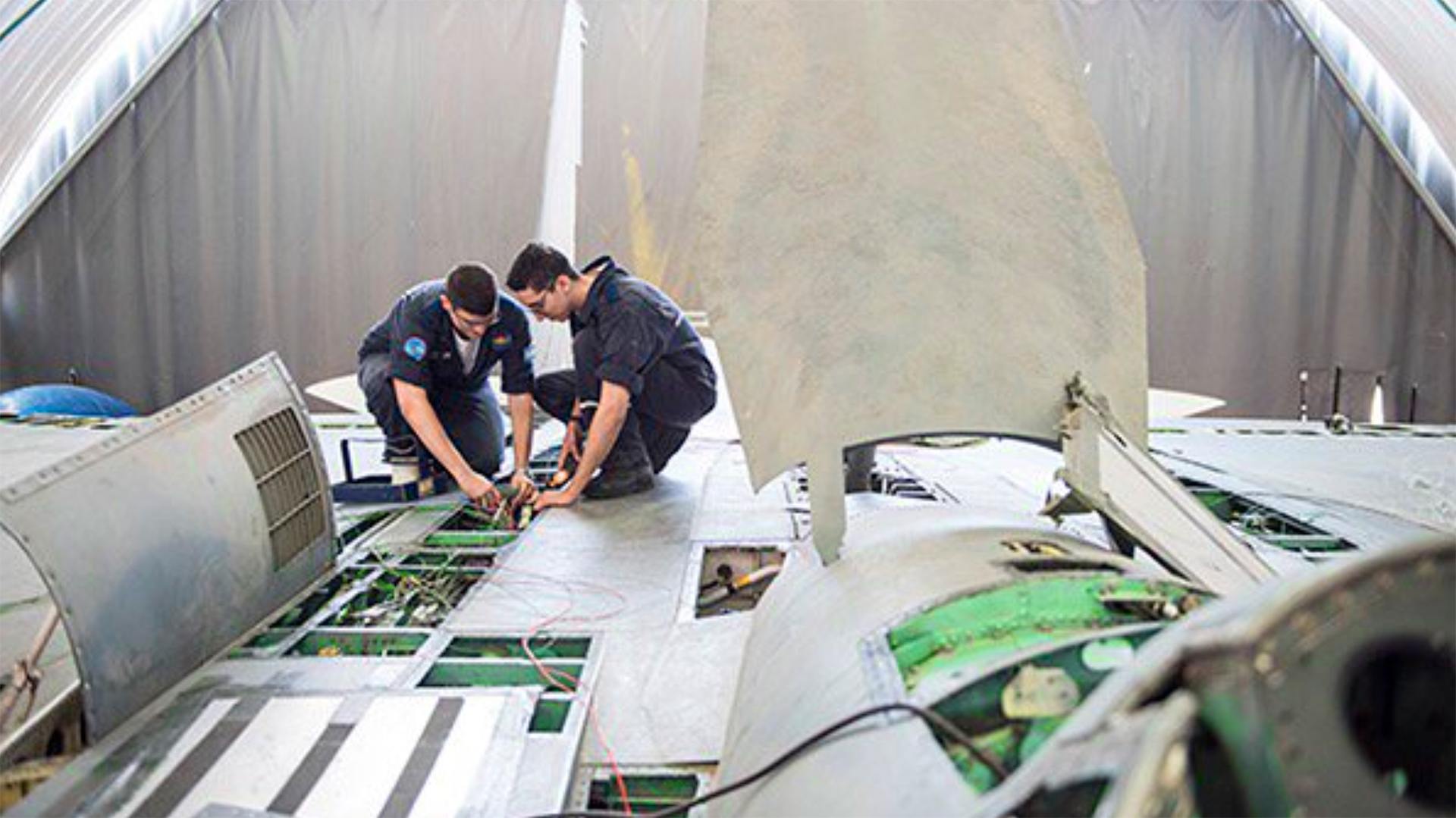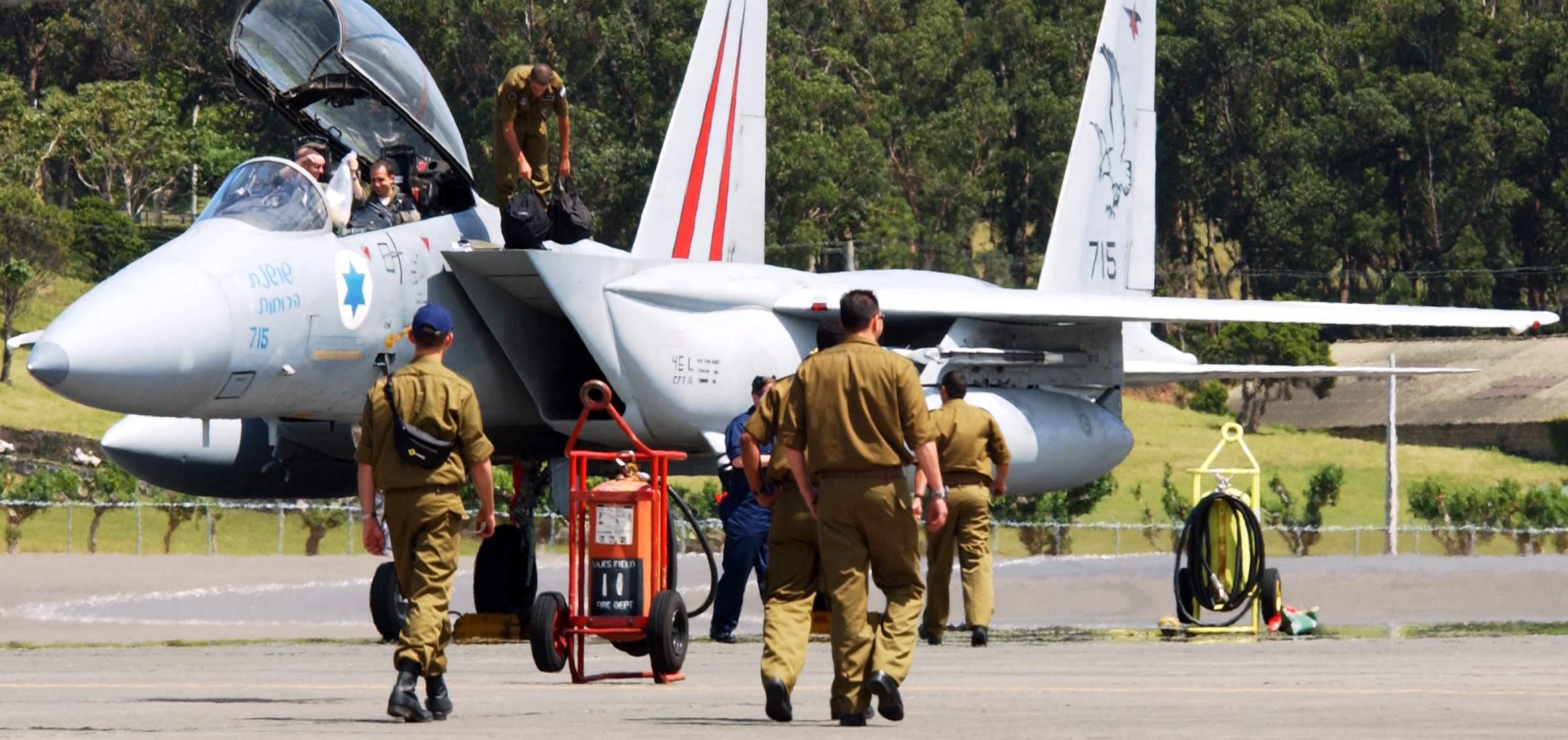The Israel Air Force is working hard to regenerate and drastically upgrade nine ex-U.S. Air National Guard F-15Ds that previously served with the 173rd Fight Wing in Klamath Falls, Oregon. As we reported in September of 2016, these aircraft were donated as part of a still active, multi-billion dollar aid package to Israel that was enacted by the Obama Administration. It may seem odd at first that the IAF would want surplus two-seat Eagle models that were originally manufactured in the late 1970s. But these aircraft provide a totally different mission set and value proposition for the Israeli Air Force than they do for the USAF. Today, Israel’s uniquely configured F-15Ds are among the IAF’s most flexible and capable multi-role fighters.
Israel turned their air superiority focused F-15s into long-range strike platforms long before the F-15E Strike Eagle entered service with the USAF (read all about this and the unique evolution of the F-15 in Israeli service in this past feature of mine). Since then, the “Baz” as it is known locally, has become increasingly “Israelized” with indigenous avionics, munitions, sub-systems, and structural upgrades.

Today the IAF’s D model Baz aircraft are used for a whole series of roles, including counter-air, strike, reconnaissance, and especially as command and control and networking platforms to support long-range strike missions. The C and D models in particular are attractive to the IAF because they are far cheaper—as in free in this case—than their F-15I Strike Eagle derivative cousins but they can also be fitted with “fast pack” conformal fuel tanks for extended range and they can be upgraded locally to handle complex and evolving missions.
According to the IAF, the decision to invest heavily in the surplus F-15 “station wagons” was not apparent at first:
“The aircraft were decommissioned by the USANG as a part of a natural decommission process and were supposed to be used for spare parts. However, the service members of the IAF’s Materiel Directorate and Technical Branch recognized their potential: two-seat F-15 fighter jets with the ability to carry Conformal Fuel Tanks (CFT). This marked the beginning of the jets’ conversion process to “Baz” models.
In the first stage of the project, four aircraft will be converted to the Israeli variant, and will then enter operational service in the IAF. In the second stage, the remaining five aircraft will be converted, replacing five single-seat “Baz” aircraft which will be then be decommissioned.”
The end game goal is to increase the amount two-seat Baz jets in Israel’s front-line squadrons while also replacing older worn-out single-seat models. The project is extremely complex and time consuming. It is the first time IAF maintenance specialists have worked on the “D6” block of F-15s—these are literally the first F-15Ds ever built—so there is a lot to learn, and each aircraft will take a whopping 170 days to complete.

Because so many components will be changed out and upgrades installed, the teams doing the work will have to record the aircraft’s original configuration and all the unique changes they make so that they can teach IAF ground crews to maintain the jets and operate them once they hit the fleet.
Private sector technicians that had worked on the Baz in the past were also brought in for their expertise. Senior Warrant Officer Motti Shpindler from Tel-Nof AFB’s Maintenance Squadron, which is doing the work, states:
“Beyond the operational aspect, this project is of professional significance. The technicians participating in this project study the ‘Baz’ as extensively as possible, familiarizing themselves with the aircraft more than any other technician… This is the most complex project we’ve performed.”
Senior Warrant Officer Shpindler also added:
“A project like this has never been done before, so we utilized the people who are the IAF’s living memory… We disassembled the aircraft and turned it into an Israeli Baz by equipping it with weapon systems that provided it with new capabilities. It will function like the newer Baz jets, utilizing capabilities that even some of the current operational aircraft don’t have.”

Part of the challenge is that these the oldest of F-15Ds have been upgraded time and time again over nearly four decades of service, and those changes were only documented to a certain extent, at least in such a way that the IAF would need to rework them into the indigenous Baz configuration. So a lot of the work is really detective-like in an attempt to understand the jet’s current configuration before reworking into something more capable and suited to the IAF’s demanding needs.
As for upgrades, I wrote the following in my previous feature on Israel’s ever more capable Baz fleet:
The IAF chose to indigenously upgrade the Baz fleet, mainly due to cost and the fact that its own unique sub-systems would have to be integrated anyway. Known as the Baz 2000 program, this reworking of the best of the IAF’s Baz fleet would give F-15A/B/C/D aircraft a common cockpit configuration, although that was just the start of the improvements…
…The Python 4 high-off-boresight short-range air-to-air missile and the Elbit DASH helmet mounted sight were introduced into the fleet as well. This gave Baz pilots the ability to engage enemy fighters far off the jet’s centerline by having the pilot simply look at the target and fire the missile. This was a first for the F-15 and a capability that would only come to USAF F-15s well over a decade latter in the form of the Joint Helmet Mounted Cuing System and the AIM-9X Sidewinder.…
…Many of the upgrades were ported over from the F-15I, while others were unique to the Baz fleet. The radars were upgraded to fire the AIM-120 AMRAAM. A new Hands-On Throttle And Stick setup was installed. Multi-function displays were added to the cockpit, both front and aft in the B/D model’s case. Enhanced data-links and updated communications gear were installed. A new electronic warfare suite was also integrated into the middle aged jets along with new mission computers and navigation systems (with embedded GPS). Enhanced cooling was also a much needed feature. To support these new systems, the Bazs were totally rewired, which in itself was an impressive feat…
…Israel’s reinvigorated Baz fleet has never been more relevant than it is today. The advent of GPS guided weaponry, such as the JDAM, allows them to finally work as pinpoint, all weather, fixed target strikers without having to rely on cumbersome optically guided weaponry. They can also still work as standoff weapons haulers as they had for decades, the only difference being that now Israel has a whole array of standoff weaponry that can be tailored to the target at hand. In addition, the Baz’s speed, range and stability made it an ideal platform for tactical reconnaissance, and large reconnaissance pods have been seen slung underneath these jets over the last decade or so.
Because the Baz still has similar range as its more contemporary successors, the F-15I and the F-16I, it can work as a forward deployed networking and command and control node, absorbing the battle picture via data-link from fighters within its line of sight and then beaming this information up to a satellite, which then beams it back down to Israeli commanders hundreds, or even thousands of miles away. This can also go in the opposite direction, with new orders, alerts of pop-up air defenses, and other updates being sent from behind friendly lines or from orbiting strategic intelligence aircraft to the F-15D Baz. From here, the Baz can disperse this information to the rest of the non-satellite communications equipped strike package.
This high bandwidth satellite communications modification can be seen on F-15Ds packing a large bulbous R2-D2 like satellite communications dome just behind the jet’s environmental cooling system vent, located on the jet’s forward spine…
…Going ‘downtown’ over enemy territory with a strike package is something a traditional command and control aircraft cannot do, but the Baz can. In fact, it can do this while also doing other tasks, such as electronic warfare, attacking fixed targets or conducting counter-air duties. The later of which is what the Baz was originally envisioned for, and with an unbeaten Israeli air combat record to this day of 50 to 0, it is a mission the jet is still very capable of.
The Baz is scheduled to not just remain in service for decades to come, but to also receive more investment in the form of additional upgrades. These proposed upgrades could include improving the jet’s radar, upgrading its electronic warfare capability, integrating new weapons, and fielding new cockpit display interfaces. Even a possible structural upgrade may be ordered. This should allow at least the F-15C/D portion of the Baz fleet to continue flying well into the next two decades…
…If the F-15C/D Baz fleet were to see an Active Electronically Scanned Array radar upgrade, similar to the USAF’s APG-63V3 radar upgrade for its Eagles, such a powerful radar system could be a force multiplier for the rest of Israel’s fighter fleet. It could provide long-range situational awareness, enhanced ability to spot low-flying cruise missiles and stealthy targets in the homeland defense roll, and it could be yet another electronic attack weapon in Israel’s already bristling bag of electronic warfare tricks.
Such a system could also benefit the F-35, which, like all stealth aircraft, best goes about its business without putting any electromagnetic energy into the environment around it. Instead, it could use the F-15C/D’s AESA radar information, taken from dozens of miles to its rear and sent forward to the F-35 via data-link, to evade or even prosecute aerial targets without emitting any electromagnetic energy at all…

Even though the IAF is going through a series of major platform changes, including declaring initial operational capability of their growing fleet of F-35Is, as well as putting their oldest F-16As out to pasture once and for all, the original F-15 variant, with some substantial tweaks, remains irreplaceable. Meanwhile the future of the F-15C/D fleet in U.S. service remains unknown.
The first of these reworked F-15D aircraft, which is serving as a prototype of sorts, will take to the skies in January. Following a successful flight test program it will enter the fleet operationally as one of the country’s, and world’s for that matter, most advanced F-15s.
contact the author: Tyler@thedrive.com
